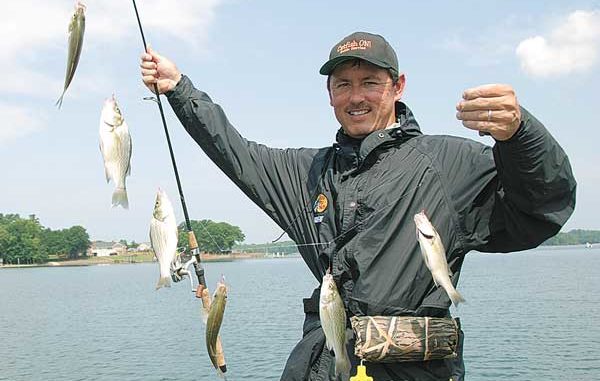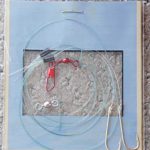
White perch are making an impact on South Carolina lakes — but is it a good or bad one?
Here’s a news flash — illegal aliens are overrunning South Carolina. Unlike other illegal aliens, these are underwater. And there are also just as many, if not more, of them.The fish in question is not a crappie, a speck, a slab or any other colloquialisms associated with crappie.
The fish is the white perch, and it is known by no other name — at least none that can be printed in a family friendly magazine.
This past June, the S.C. General Assembly — at the suggestion of the S.C. Department of Natural Resources — passed legislation that removed the “gamefish” status from the white perch. That made it legal to harvest as many white perch as fishermen want, as well as removing the stipulation that they be caught with hook-and-line only.
The move has been applauded by many freshwater users.
The white perch is a bass or “morone” — a member of the “true bass” family and related to white bass and striped bass. They bear a resemblance to white bass, in miniature form, but are vaguely distinguishable by an unbroken lateral line that often is colored with a greenish tint.
White perch reproduce quickly, and as such, their numbers tend to stunt their growth, making the average fish somewhere in the 7- to 8-inch range — although larger catches have been reported.
The white perch is native to estuarine drainages such as the Pee Dee and Santee rivers in South Carolina’s coastal plains. According to Gene Hayes, a fisheries biologist with the SCDNR, white perch either made their way or were illegally introduced into the Lake Murray and Lake Greenwood on the Saluda River system.
The initial introduction did not take place under the authority of what was then the S.C. Game and Fish Commission, and it went relatively unnoticed until the late 1980s. It was during this initial expansion of its range, in 1986, that Chris Epting caught what was a state-record white perch out of Lake Murray. Hayes said that since that time, the SCDNR has received reports of white perch showing up in just about every major body of water in the state.
The spread has been likened to an infestation of fire ants.
Despite the fish being maligned by most fishermen and biologists, a few anglers have stepped up to point out its positive aspects. One is Rodger Taylor of Rock Hill, who guides for catfish on Lake Wateree and Lake Wylie.
“They make great catfish bait,” said Taylor, who tied the state record last year with a 1-pound, 15-ounce specimen he caught from Lake Wylie. “The other good thing about them is that when no other fish will bite, I can always count on catching a mess of white perch. On those non-productive catfish days, it doesn’t take much convincing to change a guided catfish trip over to a guided perch-jerking trip, especially if there are kids on the boat.”
Taylor is not alone. Hayes confirmed that creel studies from 2005 on Lake Greenwood show white perch established as a target species, getting two percent of total fishing effort. Those studies also indicated that white perch accounted for 11 percent of fishermen’s creels — a testament to the fact that there are plenty of them willing to bite. Hayes also reported that many fishermen touted the small panfish’s big appeal in the frying pan, indicating the perch’s white, flaky meat to be very tasty.
With a budding fan base, how does a fisherman intent on loading up with bite-size fillets go about getting on the white perch bite? Taylor shared some of his insights.
“Just like any other fish, I start out looking for baitfish,” Taylor said. “In November, shad start to mass up and move into the creeks, and just about everything else, including white perch, falls right in behind them.”
Taylor says most of his success comes from fishing on the
bottom, even on days when he can see them schooling on the surface. His year-round target depth for white perch is 20 feet; he finds them on long points or humps near deeper water.
His ideal location would be a long, tapering point with 20 feet of water on the end — dropping off somewhere about halfway down a major creek arm. His preferences on Lake Wylie are Big Allison Creek, Little Allison Creek and Nivens Creek — all on the lower end.
“These fish stage on these points, and when a school of shad comes by, they’ll tear into them wherever they are, and then move back to the points to go again,” Taylor said. “In fact, I do better on bare points with no cover that don’t have bait holding on them — just nearby. I’ll fish right on the bottom, and when I catch one fish, I can usually catch 15 or 20 before they move off. Then, I can either stay put and wait for them to come back or go hunt another point. We often refer to this as miniature striper fishing.”
Taylor fishes for white perch using a homemade Sabiki rig that has two gold No. 4 or No. 6 hooks about a foot apart on loops off a stiff 3- to 4-inch leader, which causes the leaders to stick out from the main line. He uses a quarter- to half-ounce bell sinker at the bottom, He baits the hooks and drops the rig to the bottom, using several rods set in rod holders. When the fish move in, it’s all he can do to keep one rod baited and in the water before he gets another bite.
“This is classic bottom-fishing” said Taylor. “In fact, I don’t even reel in when I feel the first bite, just set the hook and let the rig load up with whatever number of hooks you have on the rig.
“I picked the idea up from a commercial sabiki rig that the striper guides use to catch bait,” Taylor said. “The only problem is that you can load up six hooks in a hurry, and it takes more time to untangle the mess and get all those hooks rebaited than it does with just a double hook rig.”
Taylor likes to anchor the bow of his boat on a long point, looking for fish on his depthfinder. He lets the boat swing with the wind or current and says he wants the screen of his depthinder to look like “spaghetti and meatballs” with lots of criss-crossed lines around a pod of bait. He doesn’t mind if he only marks a couple of fish, because he thinks the fish stay right on the bottom more than most anglers realize.
Due to their competitive nature, catching a couple of fish is usually all it takes to start a feeding frenzy, and the action will be fast and furious until the school moves off. His bait preferences are pieces of red worm or small pieces of cut bait from a white perch — although he said he catches bigger perch on a 2- or 3-inch live minnow.
“Like them or not, they’re probably here to stay,” biologist Hayes said. “We encourage anglers to keep as many as they want. Reducing their numbers reduces the strain on whatever lake they are in and will even increase the size of the
perch themselves.”









Be the first to comment